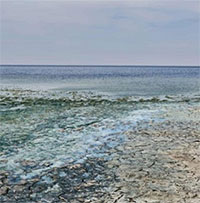Calculating a starting price of 53,000 USD (more than 1.2 billion VND) for a space equivalent to a shoe box , the 12-storey Shan Sum building in Hong Kong (China) is considered too expensive to live in.
This place specializes in serving the affluent customer segment – those who are looking for a “luxury” resting place when entering the “afterlife”.
According to CNN, Shan Sum is an ancient church designed by a German architect, used to store the ashes of 23,000 people. The price for enough space for 2 urns can be up to 76,000 USD; while 8 pots (ie a multi-generational family) is 430,000 USD (more than 10 billion VND).
As such, an “accommodation” in Shan Sum is even more expensive than a house for a resident . For comparison, in March, a mansion in the luxury The Peak area was auctioned for ,000/ 0.09m2 .

The starting price for a place to store remains in this building is up to 53,000 USD.
However, Shan Sum is still not the most expensive place to live for the deceased. The temple complex in the northern suburb of Fanling is currently priced at 0,000 per urn, according to the Hong Kong Consumer Council. This price does not include the management fee (at least 25,000 USD) for maintenance.
This investment may not seem too expensive considering the long life in the afterlife, but places like Shan Sum only allow ashes to be stored for a specific period of time, subject to a private license. Permits are valid for 10 years and take a long time to obtain.
According to architect Ulrich Kirchhoff, Shan Sum has a resort for families to visit deceased loved ones. About a fifth of the building’s area is open space, designed in a wavy structure inspired by traditional Chinese graveyards. Dehumidifier and air conditioning system are fully installed. Customers can even pre-order offerings through the app.
It is known that Shan Sum is the brainchild of Margaret Zee – a famous 70-year-old businesswoman who is rich in jewelry and real estate and currently runs a charity fund named after her. Zee said respecting the dead is an integral part of Chinese culture.
“This is not just a place to send loved ones off to the afterlife. It’s also a place for those who stay to find peace,” Zee said, adding that struggling to find a place to bury her husband who died in 2007 prompted her to take action.
In Hong Kong (China), the gap between supply and demand pushed real estate prices to record highs . Essentially, in an area with more than 7 million people, the competition for space is heating up – with both the living and the dead. The mountainous terrain makes most of the area unsuitable for housing development.
Lacking land, real estate developers prefer high-rise buildings like Shan Sum, then subdivide the plots inside as much as possible. The average housing area accordingly is only about 39 square meters, according to the 2021 census.
An aging population further accelerates the need for places to store ashes. Currently 20% of Hong Kong residents are over 65 years old, according to census data. This number is forecast to increase to 30% by 2069.
More than 90% of people choose cremation, while the space to store remains is gradually exhausted. Most do not want to scatter ashes into the river because the Chinese have a mindset of storing material things to show their respect and remembrance. Hong Kong is rapidly increasing the number of cemeteries to keep up with demand.

